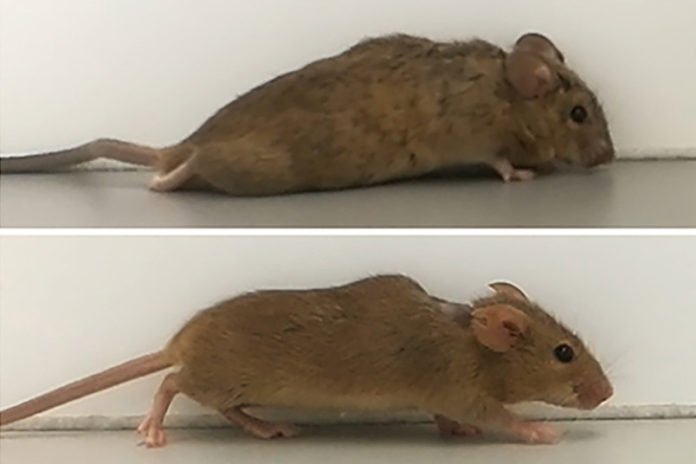
- Spinal Cord injuries often result in paralysis as a result of irreparable damage to nerve fibers.
- Now, researchers at Ruhr University Bochum have managed to make paralyzed mice walk again with the help of gene therapy.
- The German scientists injected designer cytokines into the brains of paralyzed mice which led to the regeneration of nerve cells.
Within our spine is a bundle of nerve fibers called the spinal cord. It’s responsible for the transfer of information between the brain and various parts of the body. Although the spinal cord is protected by the spinal column, it is quite fragile. Moreover, the nerve fibers don’t possess any regenerative abilities; thus, spinal cord injuries can often result in permanent paralysis. There are currently no effective treatments aimed at restoring mobility.
Now, for the first time, researchers at Ruhr University Bochum have managed to regenerate damaged nerve fibers in paralyzed mice. The team of German scientists described their method in the journal Nature Communications.
Gene Therapy for Spinal Cord Injuries
The team, led by Professor Dietmar Fischer, tested a new treatment method aimed at the production of the protein hyper-interleukin-6 (hIL-6). This is a designer cytokine; not found naturally and requires genetic engineering for production. Moreover, previous research has demonstrated the protein’s effectiveness at regenerating nerve fibers in the visual system.
Professor Fischer’s team used viruses containing the genetic code for the production of hIL-6. They then injected the virus directly into the cortical motoneurons of the paralyzed mice. These particular nerve cells connect with other, inaccessible parts of the brain that help control movement. Thus, allowing for the transfer of the produced cytokine to these inaccessible areas. This led to the regeneration of nerve fibers in multiple areas of the brain.
The special thing about our study is that the protein is not only used to stimulate those nerve cells that produce it themselves but that it is also carried further (through the brain). In this way, with a relatively small intervention, we stimulate a very large number of nerves to regenerate and that is ultimately the reason why the mice can walk again.
Professor Dietmar Fischer, lead researcher
Results in 2-3 Weeks
Within two to three weeks of injection, the paralyzed mice regained movement in their hind legs. Thus, providing hope for the use of similar approaches in humans with spinal cord injuries.
The team is currently investigating whether hIL-6 can still have an effect, even if the injury occurred several weeks earlier. They hope to investigate the treatment further in hopes of application in humans.
We also have to see if our method works on larger mammals. We would think of pigs, dogs, or primates, for example. Then, if it works there, we would have to make sure that the therapy is safe for humans too. But that will certainly take many, many years.
Professor Dietmar Fischer, lead researcher
Reference:
Leibinger, M., Zeitler, C., Gobrecht, P. et al. Transneuronal delivery of hyper-interleukin-6 enables functional recovery after severe spinal cord injury in mice. Nat Commun 12, 391 (2021). https://doi.org/10.1038/s41467-020-20112-4



